1 August 2024. St James Theatre, Wellington
Below is a slightly enlarged version of my review of Solace published online by Dance Australia on 5 August 2024. The Dance Australia review is at this link.
Solace, the recent triple bill from Royal New Zealand Ballet (RNZB), offered audiences a thought-provoking look at the approach of contemporary choreographers who work with ballet companies. They are often inspired by abstract ideas rather than by a narrative line. Such was the case with the three works that made up Solace: Wayne McGregor’s Infra, To Hold by Sarah Foster-Sproull, and Alice Topp’s High Tide.
First up was Infra, danced to a score by Max Richter. I first saw Infra in an Australian Ballet season back in 2014 and I was not really thrilled with what I saw then. But I felt quite differently watching the RNZB production. In his RNZB program notes McGregor remarked that ‘Infra has become simply about people’. Two people stood out in the cast I saw—Branden Reiners and Kate Kadow. Their duet, one of several in Infra, was filled with emotion as a result of the magnificent contact they made with each other. The connection they created was not simply a result of the physicality they developed through McGregor’s choreography but in other ways as well, including through their constant and engaging eye contact. But eventually Reiners left the stage, walking off without acknowledging Kadow. Her reaction continued the momentum that the duet had generated. Kadow seemed stricken by anxiety and pain as she reacted to Reiners’ departure. It was heart-stopping. Despite exceptional dancing by the entire cast, nothing could match the performance of Reiners and Kadow.
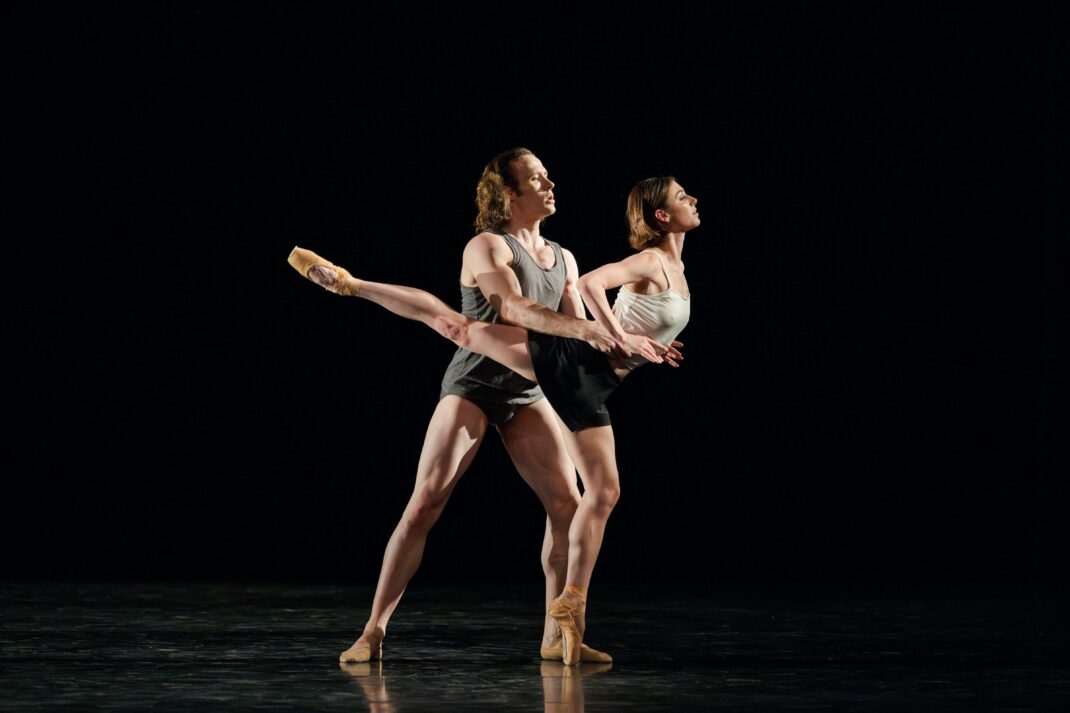
Apart from being moved by the Reiners/Kadow connection, it was interesting to watch the unfolding of McGregor’s choreography. With Infra he worked within the classical medium but pushed that medium to exceptional lengths. In particular, his choreography moved away from the classical notion that the body is centred on an erect spine. In Infra it was quite noticeable that the spine was often curved with the dancers pushing the pelvis backwards and forwards to remove and then reinstate the straight line of the spine. Great work from RNZB.
Next was Sarah Foster-Sproull’s newly-commissioned work, To Hold, again dealing with an abstract idea, ‘ways of holding and being held’. This idea was constantly made clear by the groupings Foster-Sproull created throughout the piece. Often the dancers gathered together in large, tightly-held arrangements. Often too they joined arms to create various groupings. Frequently the hands, often with fingers spread wide apart, were very prominent. To my mind this focus on joining hands in various ways meant that other choreographic moves seemed of secondary importance. I would have loved to have seen more variation rather than the work being overburdened by ‘togetherness’.
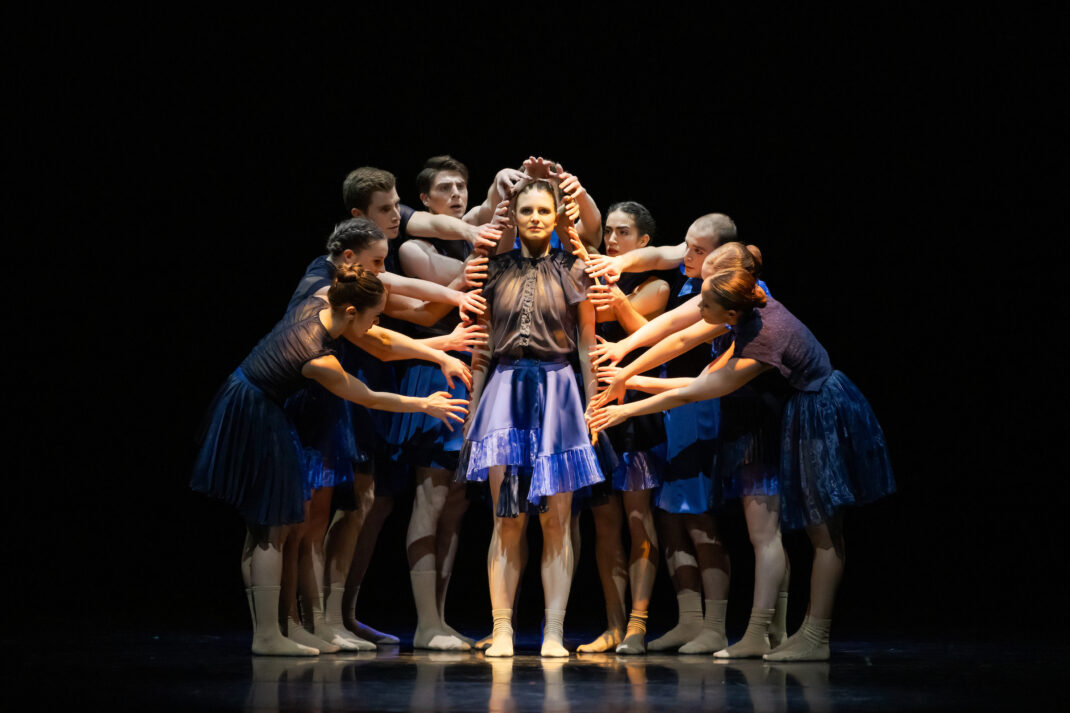
The bright blue costumes by Donna Jefferis moved beautifully as the choreography, and the score by Eden Mulholland, unfolded. The costumes added a visually impressive element to the work.

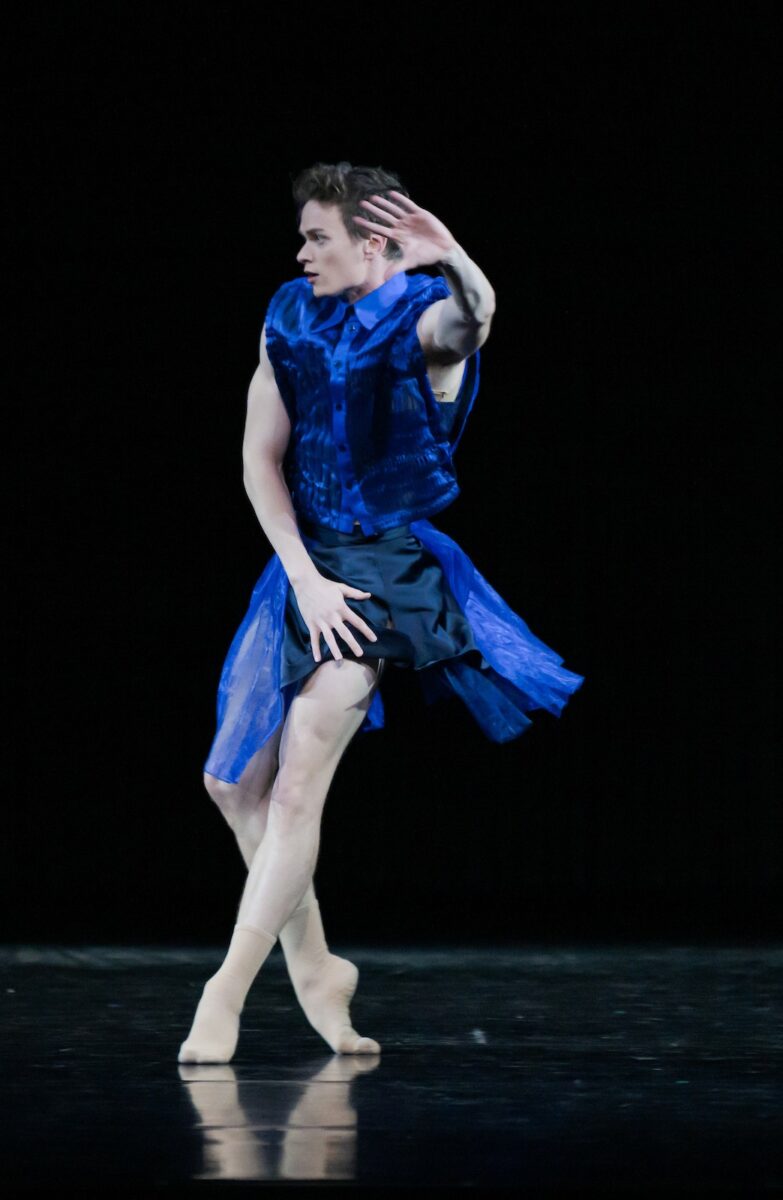
The evening ended with another new work, High Tide, created by Australia’s Alice Topp to music by Icelandic composer Ölafur Arnalds. Topp writes that the work is ‘a tender look at the isolating experiences of fear and our ever-changing shadows’. High Tide consisted largely of duets, a dance format that is a specialty of Topp’s choreographic approach. Topp showed off her skill at developing lifts and partnership moves that were often quite spectacular in the way bodies linked up. Dancers were, for example, often held upside down or in twisted positions, and they frequently pulled away from each other while still maintaining a physical connection. Topp’s choreography is firmly classically based but is demanding in its complexity and there were moments when I felt a little anxious about some of the performers. High Tide probably needs more time for the dancers to develop greater confidence and fluidity with Topp’s choreography.
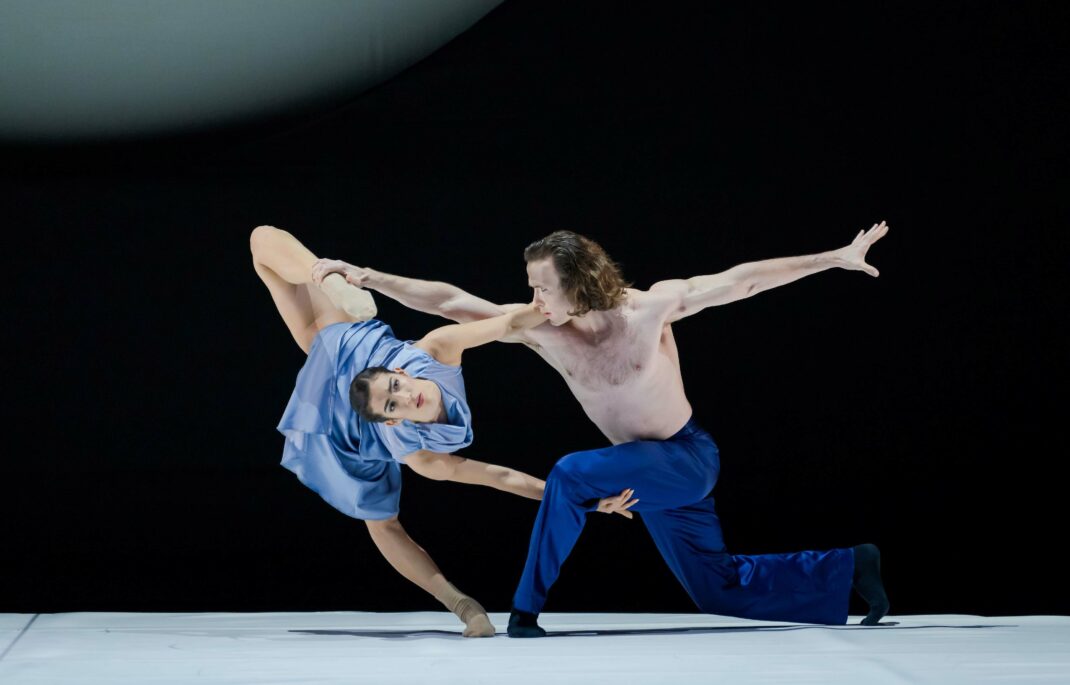
While visually all three works had an impact, the most outstanding collaborative contribution was designer Jon Buswell’s huge and domineering orb that accompanied High Tide. It reflected, on its changing surface and with its movement within the performing space, much of what Topp hoped to express about human experiences.
Solace was a demanding triple bill and RNZB rose skillfully to the occasion. It was an evening to be savoured and enjoyed for what it demonstrated about ballet today.
Update on request. An oral history interview with Alice Topp, recorded for the National Library of Australia, is available at this link. (MP 7/8/24)
Michelle Potter 5 August 2024
Featured image: A scene from Alice Topp’s High Tide showing Jon Buswell’s orb at the back. Royal New Zealand Ballet, 2024. Photo: © Stephen A’Court
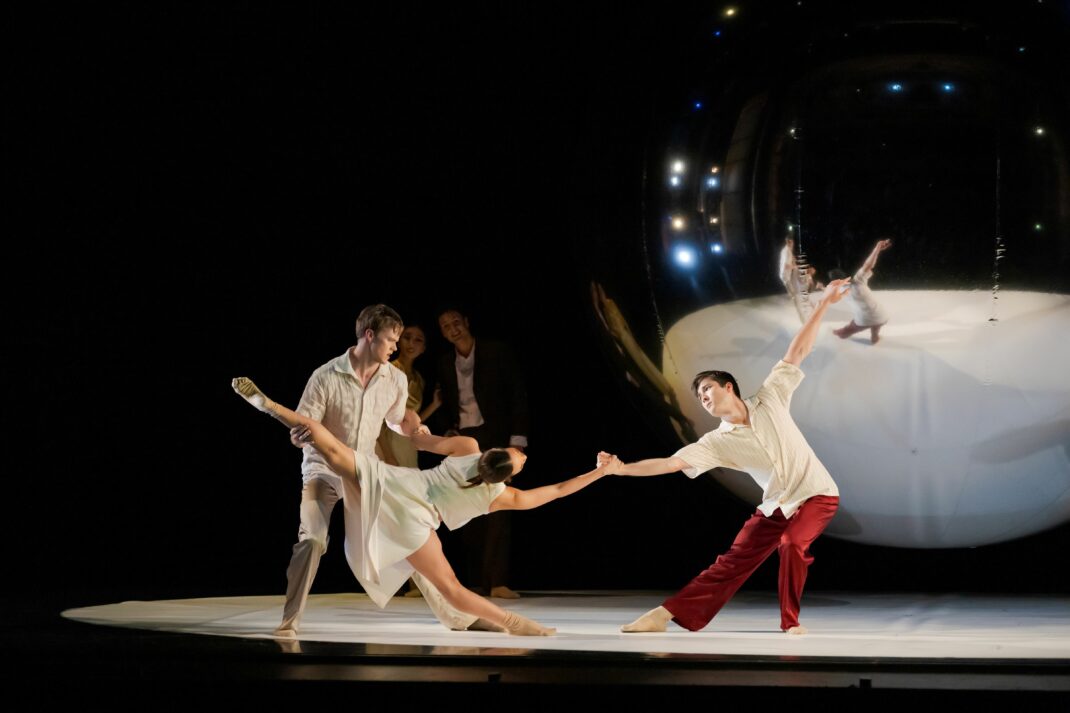
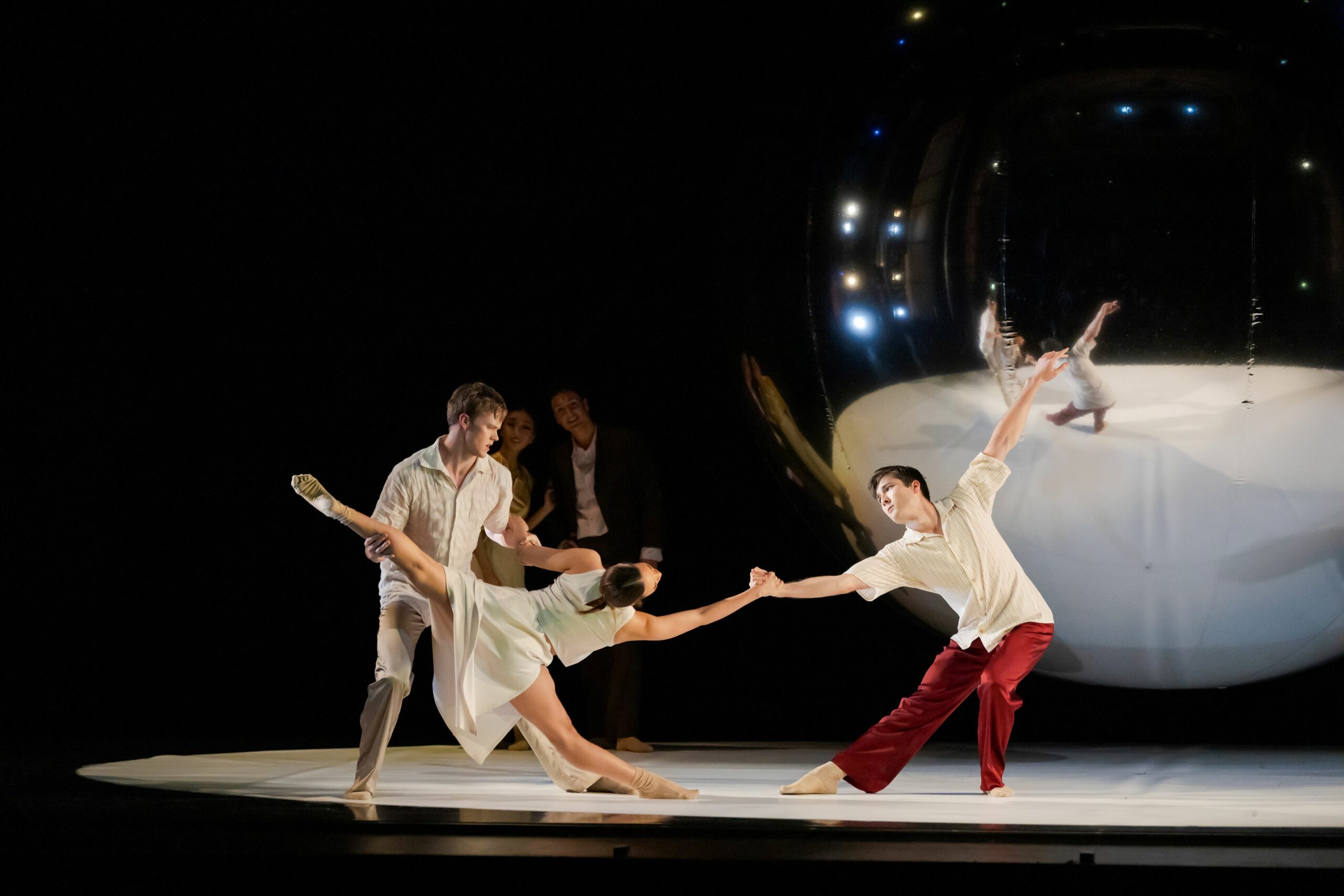
Michelle — I enjoyed reading this review of Solace — and was also very interested to listen to the oral history interview you recorded with Alice Topp. That adds considerable depth and dimension to her choreography, High Tide. Are you able to insert the link to the oral history alongside your review, for readers who may be interested?
Done!